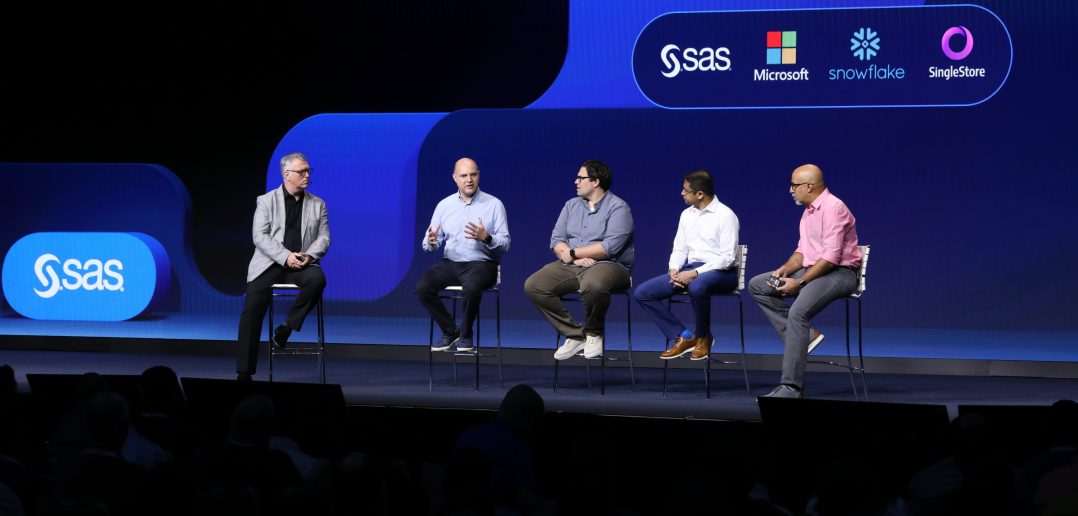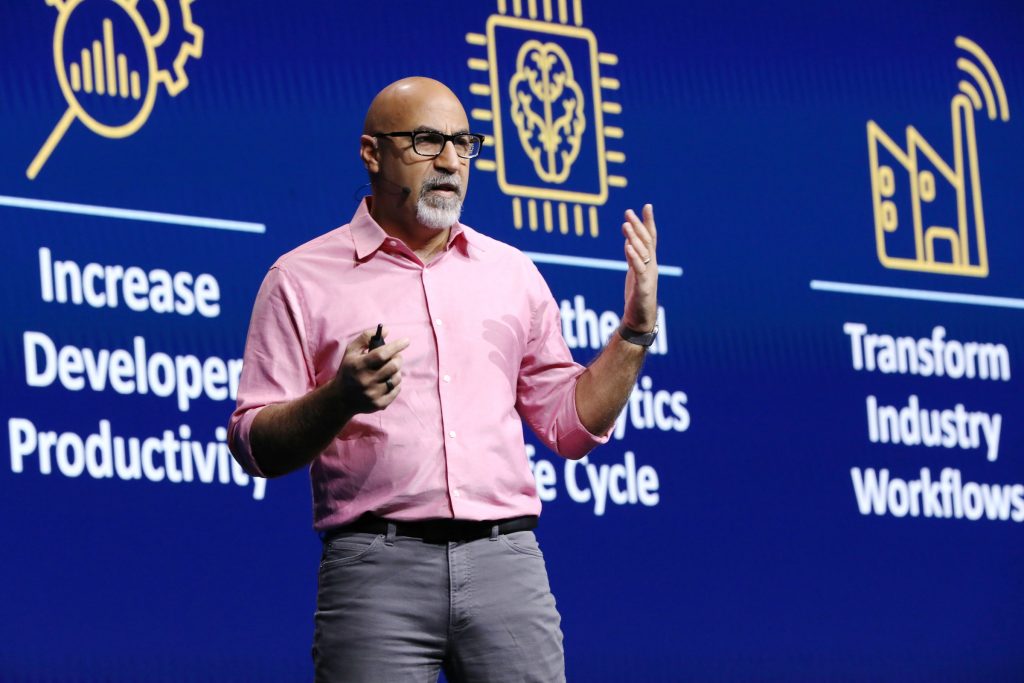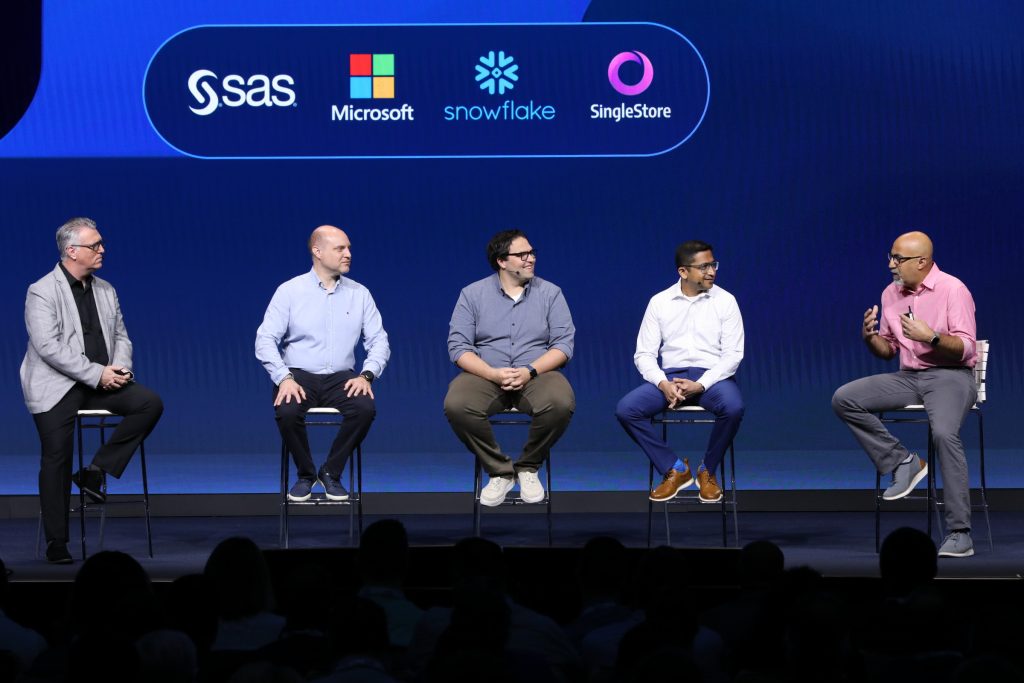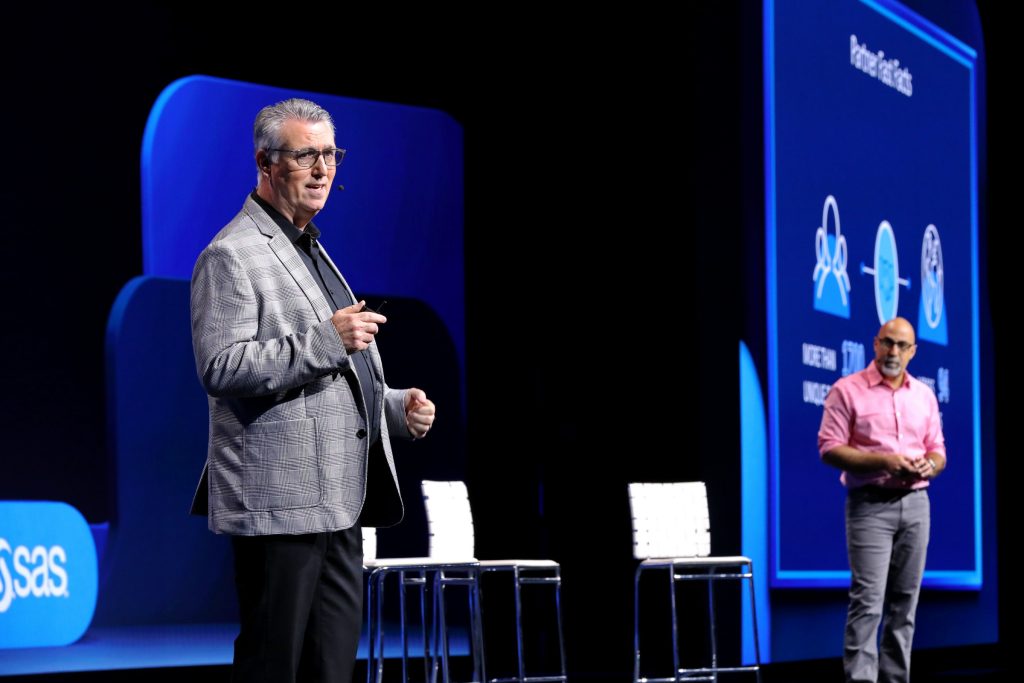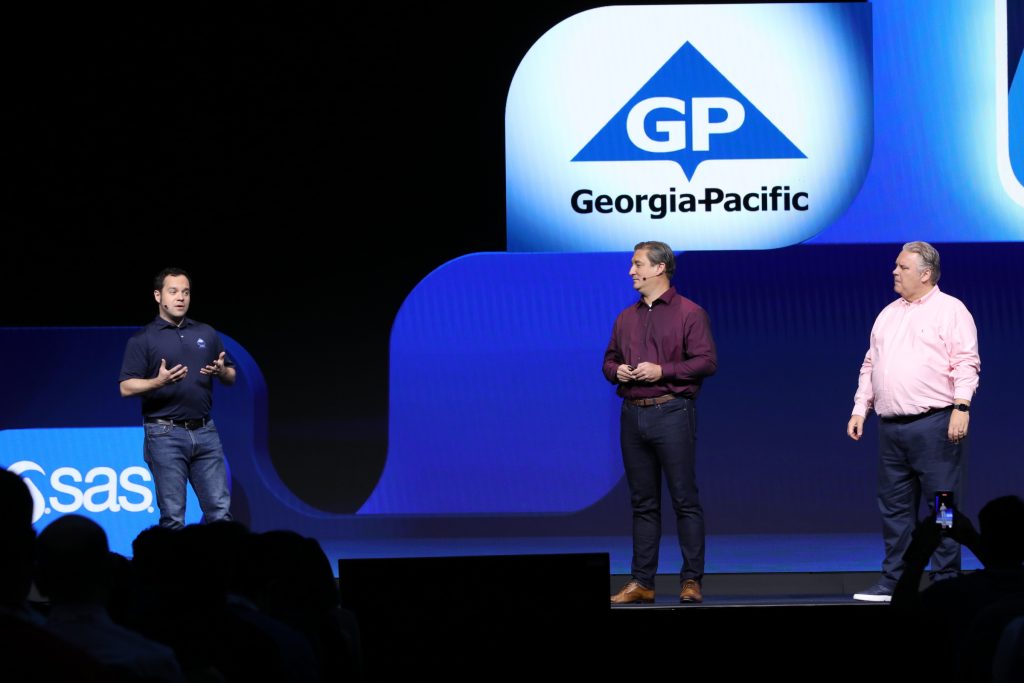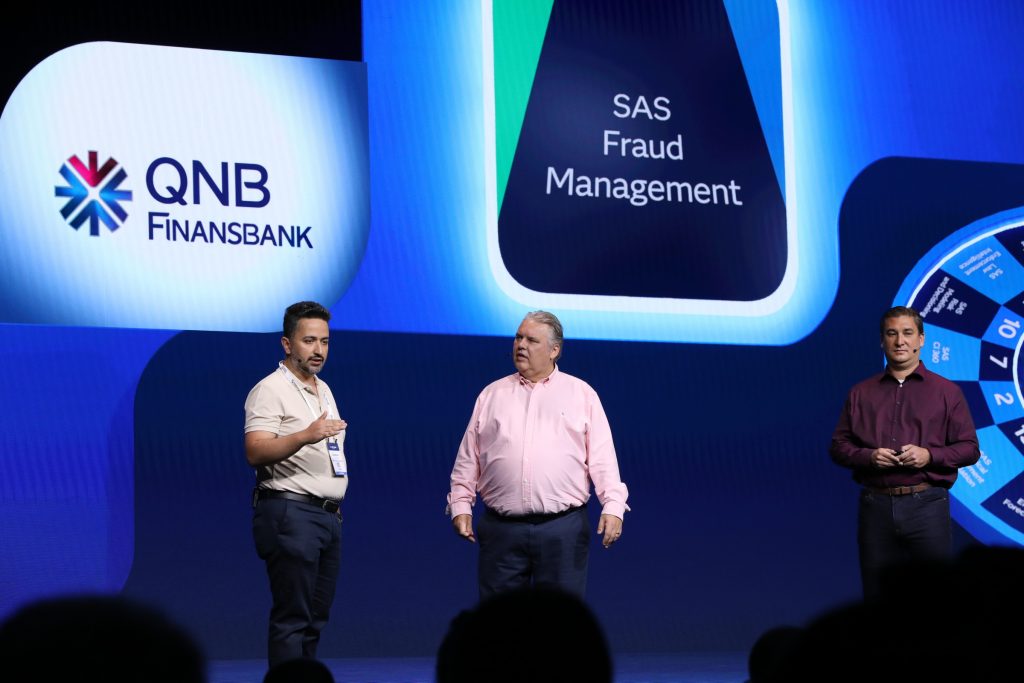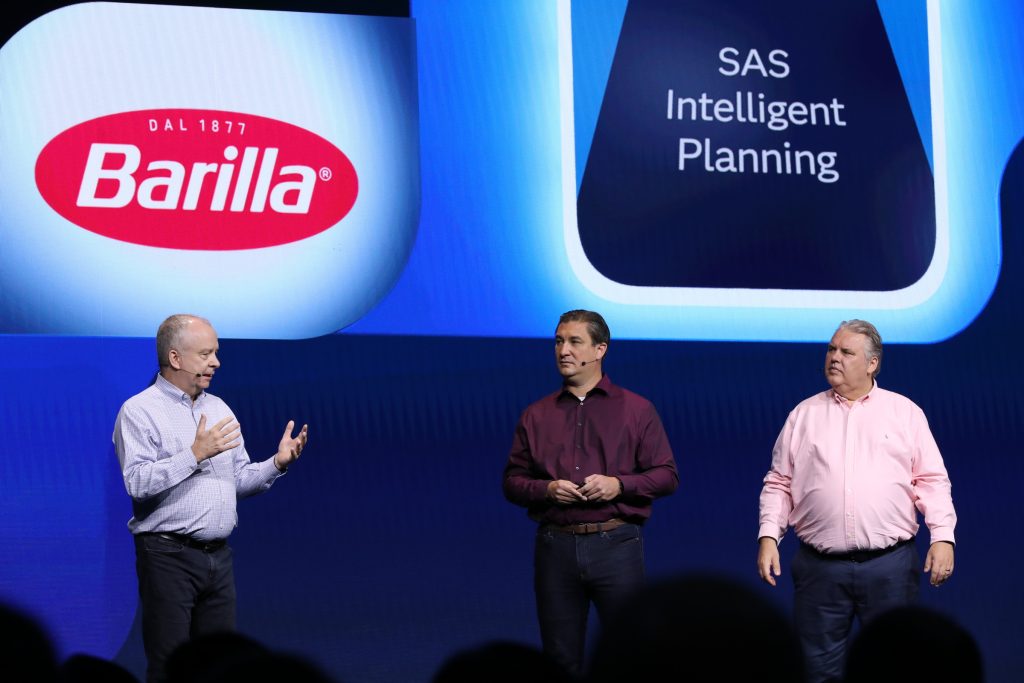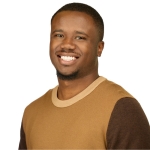As the sun rose over the vibrant city of Las Vegas, day two of SAS Explore unfolded with a promise of even more excitement and innovation. After an electrifying Day One, there was palpable anticipation for what Day Two had in store.
Host Jared Peterson stood center stage and welcomed attendees for another opening session day. While Day One focused on the SAS® Viya® ecosystem and some exciting new capabilities, Day Two took a more outward approach. A few SAS partners graced the stage to discuss how we’re working together to deliver value for customers.
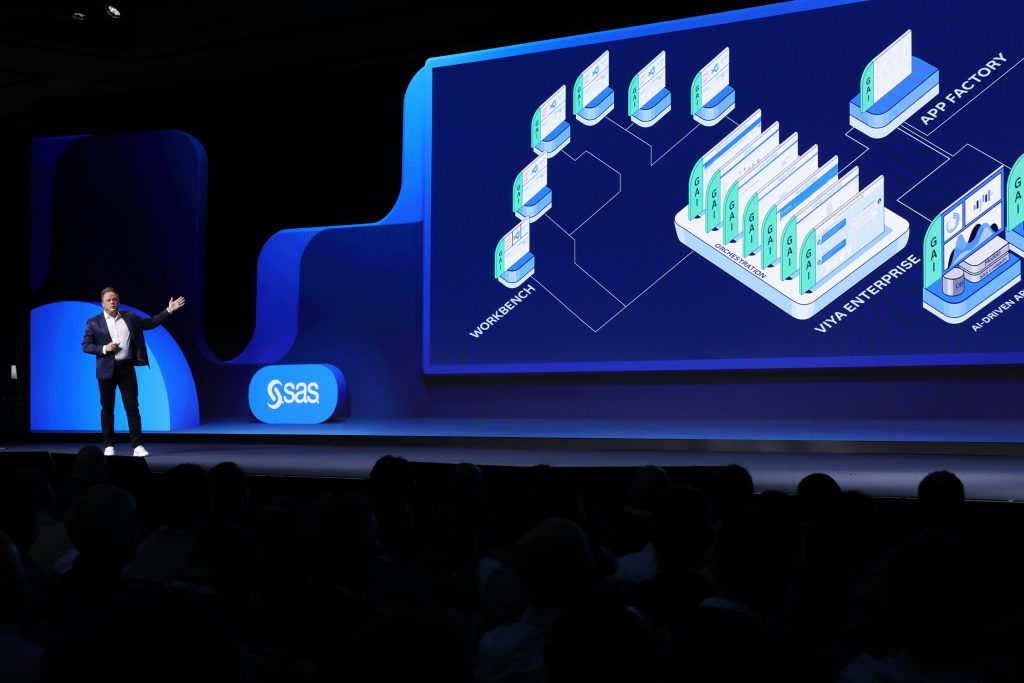
Here are some key takeaways from day two in Las Vegas:
1. How we're doing more with AI
SAS Vice President of Product Strategy Shadi Shahin and SAS Vice President of Alliances and Channels John Carey invited SAS partners Microsoft, SingleStore and Snowflake on the stage to talk about how they are using SAS® to solve business challenges for their customers. Customers are using AI for semantic search, computer vision and generative AI governance, according to SAS partners. There was one example of how these tools can be used to process millions of hours of video in a second.
“What really differentiates SAS are our partners and industry solutions,” Shahin said.
Later, SAS Vice President of Solutions Product Management John Boyd and SAS Senior Vice President of Global Solutions David Carrick, took the stage to discuss the significance of our commitment to investing $1 billion in AI-powered solutions across various industries. For decades, SAS has created lasting change through strategic investments in innovative solutions. These solutions seamlessly integrate our domain expertise, helping customers effectively use real-world evidence at every stage of the product life cycle. This investment marks a pivotal moment in our journey and gives a glimpse into what’s in store for the future.
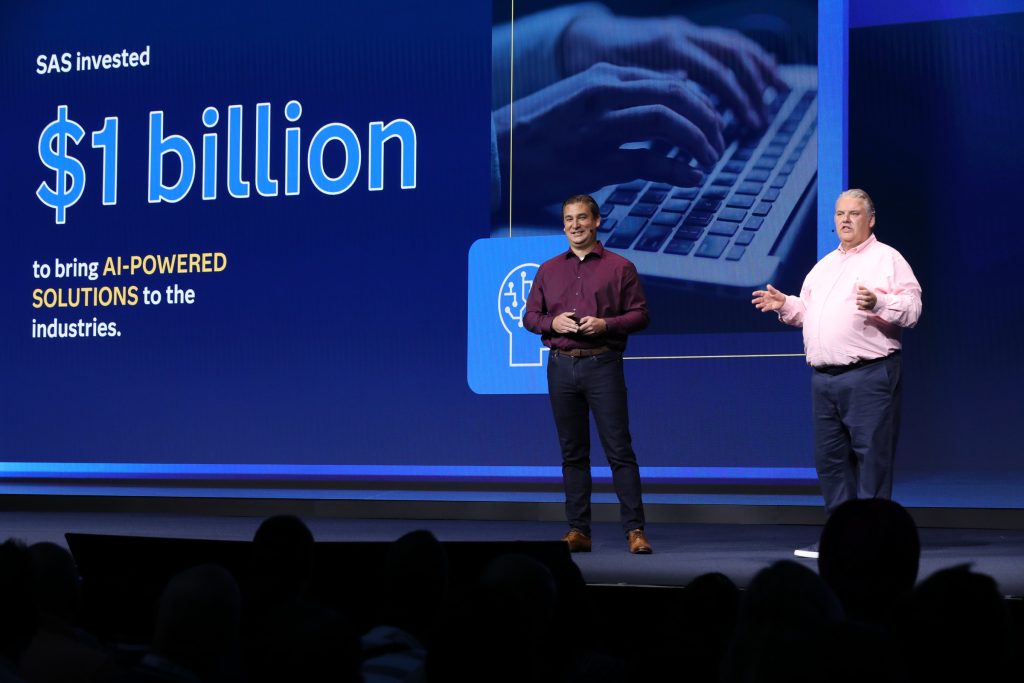
2. The importance of putting the customer first
While SAS’ domain expertise is noteworthy, Boyd and Carrick took time to recognize our partners. It’s our customers that propel the direction of our products. Through customer advisory boards, we don’t just discuss future capabilities; we genuinely listen. The two explained that our customer needs, insights and trends drive our journey and are key to our shared successes.
“With SAS solutions, we can get you up and running faster to solve the challenges you are facing today but we also have a suite of products to choose from to address your future challenges as your business evolves,” Boyd said.
3. How we’re unlocking speed and efficiency
Boyd and Carrick continued their discussion by highlighting how SAS has embedded domain expertise directly into our software, thus democratizing analytics. This means making analytics accessible to all, regardless of whether you’re a seasoned data scientist or not. These solutions are designed to get customers up and running faster to tackle immediate challenges while remaining adaptable to address future disruptions as organizations evolve.
"We want to make sure you get the user software you need without waiting weeks or months to use," Carrick said. "I like to think of the SAS Viya platform as a Swiss army knife, it's versatile, it's powerful and is solving challenges across many industries."
4. Demonstrating our impact: A word from Georgia-Pacific
As the Day Two general session unfolded, attendees had the privilege of hearing from multiple SAS customers, including Georgia-Pacific, a leading tissue, pulp, packaging and building product manufacturer. Georgia-Pacific produces many popular name brands, including Quilted Northern, Brawny, Dixie and Vanity Fair. Sam Coyne, Georgia-Pacific’s Director of AI, took the stage with Boyd and Carrick and described how they use computer vision via SAS Analytics for IoT to solve challenges. For example:
- Computer vision alerts Georgia-Pacific when parts show signs of wear so they can be repaired during planned maintenance, making techs safer and more efficient.
- Georgia-Pacific uses computer vision models, deep learning models and various neural networks to detect if someone is in a “no-fly zone,” which is a restricted area.
- Georgia-Pacific uses computer vision models to monitor off-quality products as they come down conveyor systems, alert an operator and auto-reject the materials.
5. The sustained vision for SAS®9
After Boyd and Carrick demonstrated the capabilities of SAS® Viya® with a few customers, SAS Chief Technology Officer Bryan Harris joined to talk about SAS®9. The important note for users is that the solution was recently released with version updates to enable critical security updates. Since then, additional security-related updates have been released, with more on the horizon for users. Harris and R&D leader Susan Owenby detailed three focus areas for the future of SAS®9:
- Secure the SAS®9 platform: SAS wants to align SAS®9 with President Joe Biden’s Executive Order on Improving the Nation’s Cybersecurity. This means major third-party component version updates and more.
- Prioritize and address reported customer issues: Handling bug fixes and other reported issues.
- Enhancing the SAS®9 customer experience: Harris and Owenby outlined creating simplified deployments and making upgrading to other SAS solutions, like SAS Viya, easier.
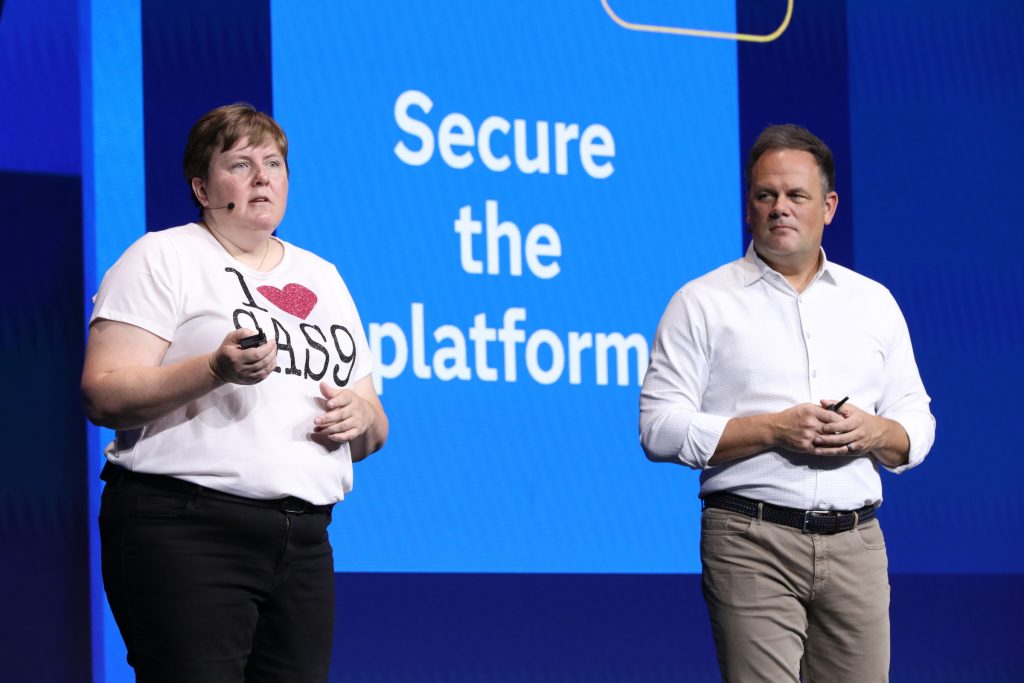
“SAS®9 is healthy, well used and is being maintained and enhanced,” Owenby told the crowd. “As you journey to Viya, we will be here to answer your SAS®9 questions and any other analytical business questions and support you.”
This can be useful for many organizations with complex systems subject to regulatory requirements that take time to adjust, reconfigure and move.
“The larger vision is for us to move customers to SAS Viya, but we want to make sure that transition is on your own terms.”
6. The mastery of Khan Academy
Day two’s keynote speaker was Sal Khan, founder of Khan Academy, which has helped millions learn and master various subjects. Khan emphasized the transformative potential of generative AI in education. He acknowledged how AI has already started to revolutionize the way we teach and learn, making education more personalized, accessible and efficient than ever before.
He introduced the crowd to Khanmigo, an AI-powered teaching assistant launched in March. Powered by Open AI’s GPT-4, Khanmigo can be used to help students as a virtual tutor. Unlike the popular ChatGPT, Khanmigo doesn’t do the school work but instead guides students to help them learn. Khanmigo is also a valuable tool for teachers as they can seamlessly use it to generate lesson plans.
“Tutoring is essential to what we think generative AI will be about,” Khan said.
Day Two of SAS Explore delivered on its promise to provide attendees with a deeper understanding of SAS’ commitment to driving change and delivering value to our customers. The day offered valuable insights into plans to invest in AI-powered solutions, too. SAS leaders emphasized our customer-centric approach, which is fundamental to SAS’ product direction. The importance of feedback in creating solutions tailored to meet evolving needs was talked about at length.
As the Day Two session ended, attendees were invited to check out more of the many breakout sessions available. Ultimately, Day Two of SAS Explore demonstrated SAS’ mission to innovate relentlessly while keeping customers at the forefront.
